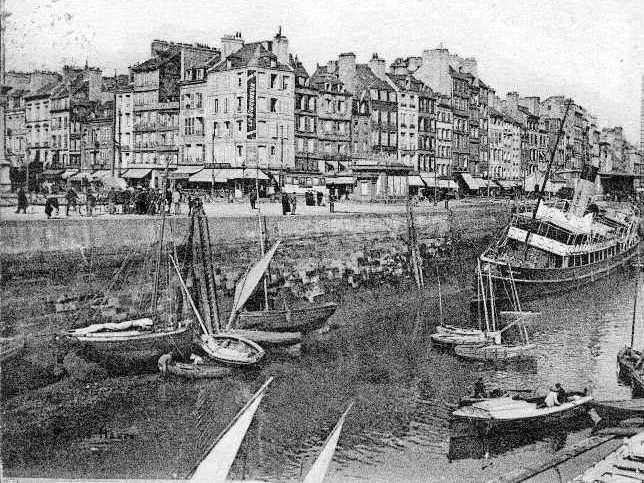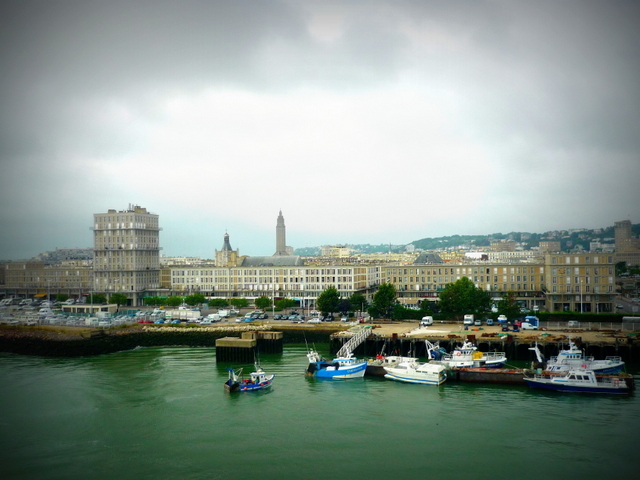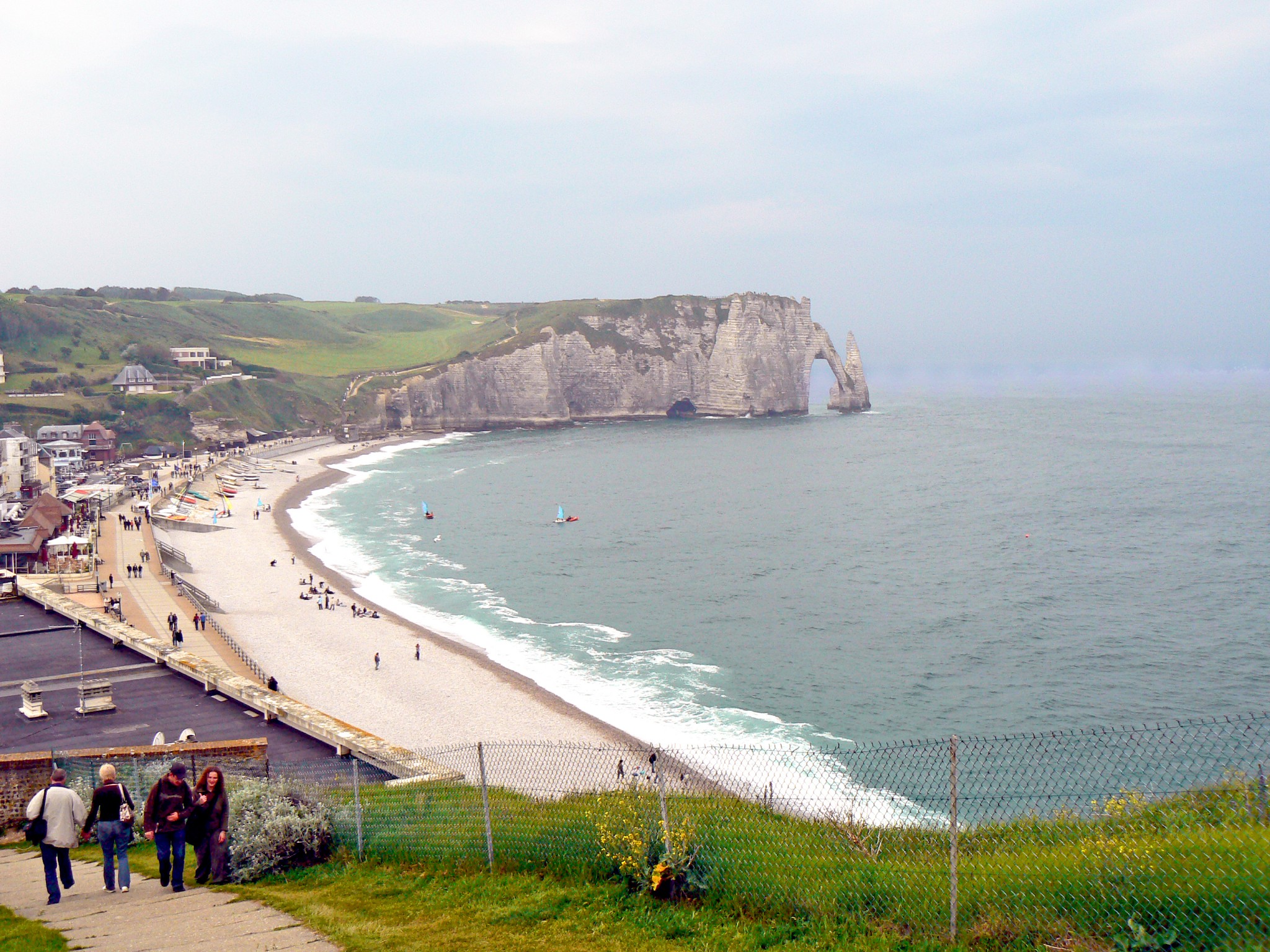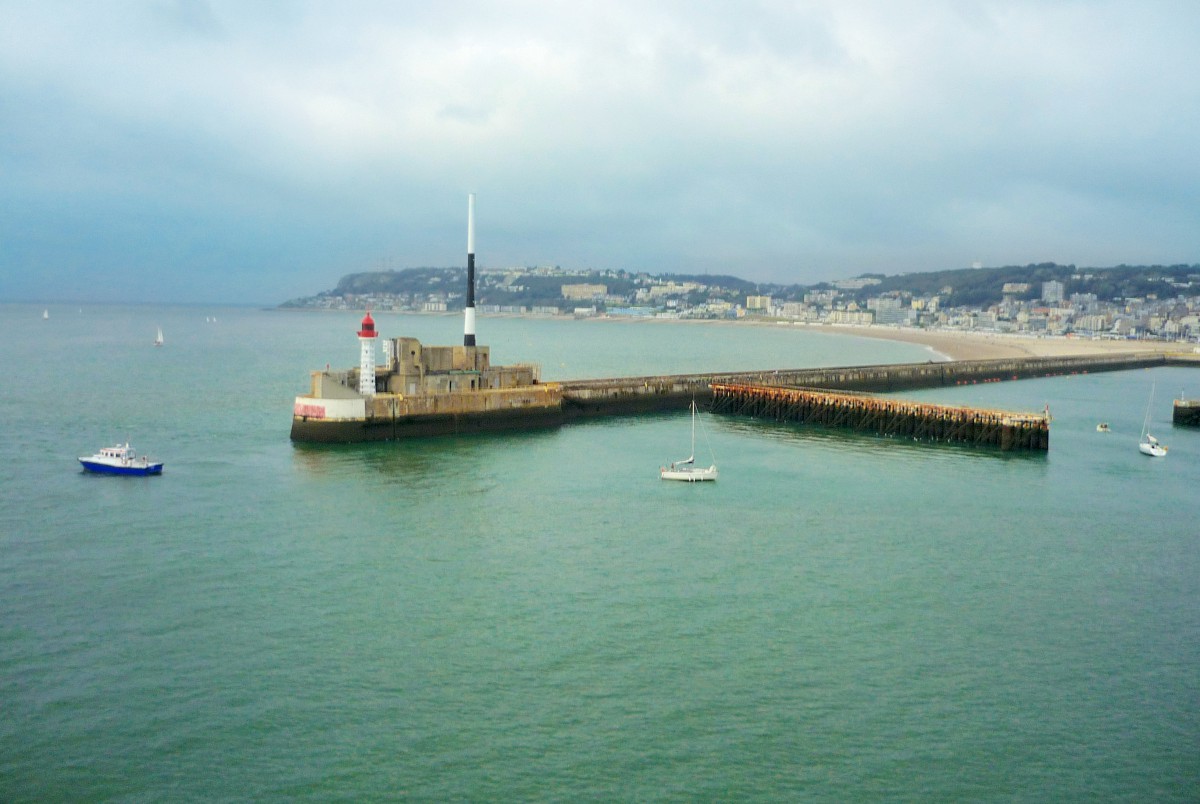The city-harbour of Le Havre in Normandy is situated on the right bank of the Seine estuary on the English Channel, the most frequented waterway in the world. The city centre was entirely rebuilt in modernist style after the September 1944 Allied air raids.
Situation
The port of Le Havre occupies half of the Seine estuary and is France’s largest container port. Le Havre is the second largest port for total traffic after Marseille and the 6th largest in the European Union.
Two major bridges connect Le Havre to the South bank of the Seine Estuary: the suspension bridge of Pont de Tancarville (opened in 1959) and the formidable cable-stayed road bridge of Pont de Normandie (opened in 1995).
Le Havre: A bit of History

Le Havre (meaning “The Harbour”) was originally founded in 1517 by King François I to replace the older harbour towns of Harfleur and Honfleur.
Alongside other ports such as Brest, Nantes, La Rochelle and Bordeaux, Le Havre quickly became one of the Kingdom’s most prosperous harbours with cotton, sugar and tobacco trading. The port’s activity increased dramatically during the events of the American War of Independence and it was from Le Havre that Lafayette embarked to a journey that would lead him to fight on America’s side in 1779. Just before the outbreak of the French Revolution, Le Havre was one of the four main ports of France.
Before the Second World War, Le Havre was the home of famous luxury liners including the France, the Île de France and the Normandie.
World War Two
![Le Havre winter 1944-1945 © Arizonaman1 - licence [CC BY-SA 3.0] from Wikimedia Commons](https://frenchmoments.eu/wp-content/uploads/2013/10/Le-Havre-winter-1944-1945-©-Arizonaman1-licence-CC-BY-SA-3.0-from-Wikimedia-Commons.jpg)
During the Second World War, Le Havre shared the tragic destiny of European ports (Portsmouth, Hamburg) that were heavily damaged by bombing raids.
One week before its liberation by Allied troops, the most terrible bombing took place on the 5th and 6th September 1944 when the BAF launched the Operation Astonia which was described as a “storm of iron and fire”.
The Allied raids led to its near-total destruction and killed 5,000 civilians and injured 80,000.
Over 150 hectares of land were razed and 12,500 buildings destroyed.
Perret’s New Town

The devastated city centre of Le Havre was completely rebuilt after the war by a team of architects led by Auguste Perret.
Between 1945 and 1964, the Belgian architect rebuilt a district of Le Havre corresponding to the former administrative, commercial and cultural centre. The reconstruction work was based on time and financial considerations. Perret said “concrete is beautiful” and visitors and ferry passengers coming from England will either love it or hate it.
In 2005, the city centre won world-fame recognition when Unesco included it into its World Heritage list. The organisation justified its choice by honouring the “innovative utilisation of concrete’s potential” in a town that created “an exceptional example of architecture and town planning of the post-war era”. Unesco further noted that Perret’s work is “an outstanding post-war example of urban planning and architecture based on the unity of methodology and the use of prefabrication, the systematic utilisation of a modular grid, and the innovative exploitation of the potential of concrete.”
Main Sights

Here are some of Le Havre’s main sites:
St. Joseph Church
The St. Joseph church was built between 1951 and 1959 as a centrepiece of the modern town-centre rebuilt by Auguste Perret. It features 13,000 panels of colourful stained-glass windows. The octagonal bell tower culminates at 107 metres and is the city’s tallest building.
Le Havre City-Hall
The Perret-designed city-hall of Le Havre is surmounted by a 17 floor concrete tower. The Place de l’Hôtel de Ville is a open public green square with pergola walkways, flowerbeds and ponds whose water flows from many fountains.
Bassin du Commerce
The dock was dug in 1792. In 1924 a war memorial sculpted by Pierre-Marie Poisson was placed between the dock and the Volcano. The dock is crossed in its middle by a white footbridge (Passerelle du Commerce).
Le volcan (the volcano)
This is one of Le Havre’s iconic landmarks. It houses a cultural venue comprising of a concert hall and an art cinema. Le Volcan was built by Brazilian architect Oscar Niemeyer famously known for designing Brazil’s capital Brasilia.
Le Havre Cathedral
The cathedral of Le Havre is the oldest building in the city and also one of the few buildings that have been left standing after the Allied bombing raids. The bell tower of Gothic style was built around 1540 and its Baroque façade. The reason why the sanctuary is relatively low compared to other churches in Normandy is due to the unstable ground which posed difficulties to the architects of the time. Inside the cathedral, the organs from 1637 were a gift of Cardinal de Richelieu when he was governor of Le Havre. The church was damaged by the bombing raid of the BAF and has been rebuilt from 1949.
The Natural History Museum
The building housing the Natural History Museum of Le Havre dates back to 1760 and was used as the town’s law court. It was turned into a museum in 1876. The south wing of the complex was destroyed by the Allied air raid and was never rebuilt. In his plans to rebuilt the town centre, Auguste Perret wished to destroy the neo-classical style building. This never happened since it was listed as a ‘Historic Monument’ by the French State in 1948.
The Court of Justice
Built in 1876 and situated on Boulevard de Strasbourg, the Law Court survived the 1944 bombings.
Quai de l’île
Bordering the street of Quai de l’île are some houses which survived the destruction of the war, some of them with slate-covered frontages similar to the houses found near the old harbour of Honfleur.
Main sights in the vicinity of Le Havre
Here is a selection of 3 interesting sights to visit near Le Havre:
Honfleur
![Explore Normandy - Honfleur © Pinpin - licence [CC BY 2.5] from Wikimedia Commons](https://frenchmoments.eu/wp-content/uploads/2018/09/Honfleur-Explore-Normandy-©-Pinpin-licence-CC-BY-2.5-from-Wikimedia-Commons.jpg)
Honfleur is one of Normandy’s most prettiest towns. Situated on the southern bank of the Seine Estuary, the little harbour town is connected to Le Havre by the impressive Pont de Normandie.
Marais Vernier
![Marais Vernier © Urban - licence [CC BY-SA 3.0] from Wikimedia Commons](https://frenchmoments.eu/wp-content/uploads/2013/10/Marais-Vernier-©-Urban-licence-CC-BY-SA-3.0-from-Wikimedia-Commons.jpg)
Located on the south banks of River Seine not far from Pont de Tancarville, the landscape of Marais-Vernier includes a marshland (le Grand Mare) surrounded by the cliffs of a hill forming an arch, on top of which are the villages and their Norman thatched cottages.
Étretat

The little town of Étretat is located in the Pays de Caux, on a section of the coast of Normandy called “La Côte d’Albâtre”, and is renowned for its impressive white cliffs, featuring arches, a large rock needle and tunnels. Read more about Étretat.
How to get to Le Havre
By car
Le Havre is easily reached from Paris (200 km) and Rouen (50 km) by the A13 and A131 motorways.
By train
Several intercity trains link Paris Gare Saint-Lazare to Le Havre within 2 hours. Rouen is 50 minutes away.
By ferry
Le Havre has connection with the English port of Portsmouth.
English-French Vocabulary

(f) for féminin, (m) for masculin, (adj) for adjective and (v) for verbs
- air-raid = bombardement aérien (m)
- Allied = Alliés (m)
- architect = architecte (m,f)
- bell tower = clocher (m)
- bombing = bombardement (m)
- bridge = pont (m)
- building = bâtiment (m)
- cathedral = cathédrale (f)
- church = église (f)
- city = ville (f)
- City-Hall = Hôtel de Ville (m)
- concrete = béton (m)
- to destroy = détruire (v)
- dock = bassin (m)
- England = Angleterre (f)
- English Channel = Manche (f)
- estuary = estuaire (m)
- ferry = ferry (m)
- footbridge = passerelle (f)
- harbour = port (m)
- house = maison (f)
- king = roi (m)
- kingdom = royaume (m)
- Natural History Museum = Muséum d’Histoire Naturelle (m)
- port = port (m)
- to rebuild = reconstruire (v)
- tower = tour (f)
- volcano = volcan (m)
- war = guerre (f)
- World Heritage Site = Site du Patrimoine Mondial (m)
- World War Two = Seconde Guerre Mondiale (f)



